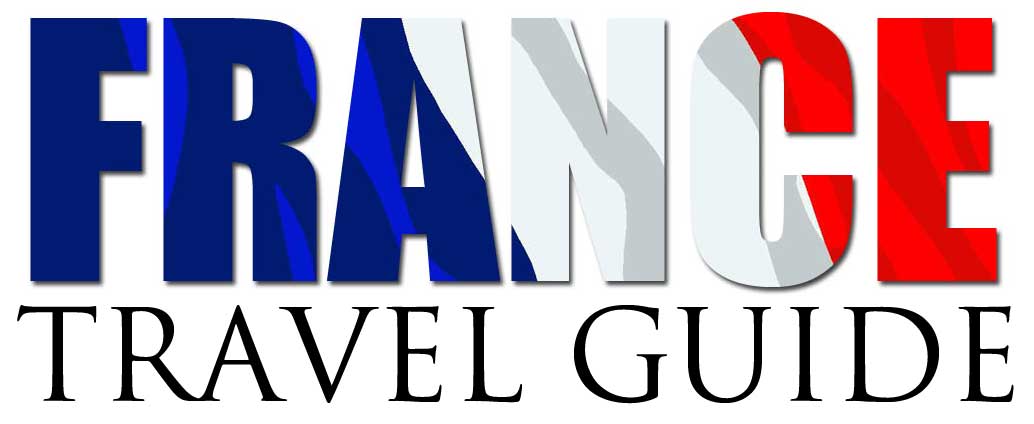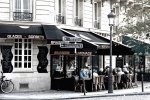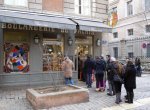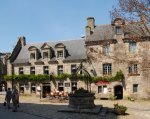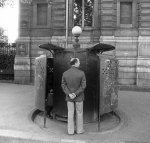cantal (15)
region: Auvergne-Rhône-Alpes
[auvergne]
a place of soothing harmonies
Cantal is such a joy to visit; it's like being enveloped in a cosy world of endless relaxation, a place where the metronome of life is set at andante rather than allegro, and the harmonies between man and the land combine to make a pastoral symphony worthy of the greatest composers. In terms of impact on your senses, the lounging landscape of green hills and glacial valleys delivers the sort of subtle pleasure that comes from a soothing massage.
CANTAL: LAND OF LOST VOLCANOES
From simple stone cottages roofed with huge slate slabs they call lauze, to fine chateaux, rambling maisons bourgeoises, and isolated farmsteads, the architectural heritage of Cantal is evident everywhere you go. It typifies a way of life played out against a landscape of intense natural beauty, for Cantal, the southernmost of the départements that comprise the region of Auvergne, is dominated by the voluptuous Monts de Cantal and high-level plateaux of impermeable rock.
Lying within the Parc Naturel Régional des Volcans d’Auvergne, these green and wooded hills were formed as part of a vast volcano – the largest extinct volcano in France – later moulded by glaciers into a central core with twelve radiating valleys. Highest of the peaks is Plomb Cantal (1,855m/6,086ft), part of a ring of summits that delimit the volcanic boundaries.
Rivers are also a defining feature here: the west and north-west of the département is bounded by the upper reaches of the Dordogne, the south by the Lot and the gorges of Truyère. Elsewhere, the river valleys of the Cère and the Rhue, the one rising on the slopes of the Plomb du Cantal, the other on Puy Mary, fashion dramatic and fecund landscapes that ripple into the hazy distance, supporting numerous small settlements of antiquity and agrarian rusticity. The entire region was once covered by forest, but gradually this was cleared by shepherds and has disappeared from large tracts of countryside. The underlying strata support excellent pastureland where the landscape is dotted with burons, small, stone-built huts, originally used to produce cheese. Today, you encounter herds of the russet-coated Salers cattle everywhere, a sure sign that this is one of France’s foremost dairy regions.
CANTAL: PLACES TO VISIT
To the east of the département lies a remarkable town that grew around the tomb of St Flour, an evangelist who preached in the Auvergne in the 4th century. The most impressive approach is from the east, from the direction of Massiac when it can be seen that St Flour is built like a fortress on a promontory of dark rock; indeed, so prescribed is St Flour by its natural position that the old town, with sheer drops on three sides, had limited scope for expansion. So, there are two towns here, one, a modern, busy place on the plain, the other, perched imperiously on a huge rocky upthrust overlooking the Ander and Lescure valleys, a network of old streets and cranky buildings.
Aurillac, a town of some 30,000 people in the south-west of the département, however, is the business and tourist capital of the upper Auvergne, a bright and modern place tacked on to an old town of narrow, twisting streets crammed with shops and cafés. Apart from during the customary French holiday period in August, Aurillac never seems to get really busy or overcrowded.
Heading in the opposite direction, from Aurillac it is a delightful circuit to leave town on the road for the Pas de Peyrol, at 1,582m (5,190 feet) the highest mountain pass in the Massif Central. The road links a string of tiny hamlets – St Simon, Velzic, Lascelle and Mandailles-Saint-Julien before beginning a marvellous serpentine route (popular with cyclists) to the pass. There is a café here hung with ancient smoked hams and sausages as well as farmhouse utensils, where a relaxing coffee or a dish of truffade leaves you time to decide whether to tackle Puy Mary (1,787m/5,862ft). Although not the highest peak in Cantal, Puy Mary is easily accessible by a concrete path that climbs from the Pas de Peyrols to a viewpoint of outstanding proportions, worth every grunting step of the way and as good an overview of the countryside as you are likely to get – an hour there and back should suffice.
On reaching the pass, a right turn sweeps you down a superb route with far-reaching views and little in the way of habitation until you reach Lavigerie, Dienne and, eventually, Murat, quite some way further on.
Murat lies at the foot of basaltic Rocher de Bonnevie, its mish-mash of narrow streets and tall, grey, blue-tiled buildings and elegant tourelles characteristic of the villages in the northern half of Cantal, lending something of a claustrophobic air that is more imagined than real.
To the west, Mauriac is moderately interesting, a small town close by the Dordogne, a place that has retained a mildly ancient allure. The Saturday market, hugging the streets around its basilica – the most important Romanesque building in upper Auvergne – is a bright and colourful affair. But there are more worthwhile diversions further south, not least in the small town of Pleaux. Here there is a modest workaday atmosphere, a mutually supportive community and a smattering of sturdy bourgeois houses in the Renaissance style along the narrow streets that ripple from the Grand Place and the broad square where the market is held.
|
Salers, one of only two ‘Most Beautiful Villages in France’ in Cantal. |
A short way inland lies Salers, one of only two ‘Most Beautiful Villages in France’ in Cantal – the other is Tournemire, equally appealing with its huddle of cottages and be-towered Chateau d’Anjony. Salers, above the Maronne, is a settlement with the tang of Scottish Lowland towns about it, places like Perth and Dumfries. This is a compact and architecturally well-preserved town, and of some considerable antiquity, although the town walls were added only in the 14th century. As with Pleaux, there are fine bourgeois houses here, the former homes of lawyers in the employ of the regional government. They make a select ensemble with the Place des Armes, near the church, and the Grande Place a little to the west, bringing a mildly severe yet elegant air – hence the parallel with towns in the Scottish Lowlands. The narrow streets are a joy to wander, leading by towers, through doorways, emblazoned archways and courtyards, and with occasional views of the hills on the other side of the Maronne valley. Salers is popular, as the surfeit of car parks betrays, although a visit in any month other than July or August will show a more peaceful and relaxed side to the town.
From Salers, it is an exceptional, exploratory drive eastwards, along the largely wooded ‘Route des Crêtes’, and by the Col de Néronne, once more to engage the Pas de Peyrol below Puy Mary. Before reaching Lavigerie, you can turn off the mountain road and head north for Riom-ès-Montagne and the high, grassy plateaux of Cézallier.
The Monts du Cézallier consist of a succession of granite plateaux covered by later depositions of basalt. As I had already discovered, this was a delight to travel, a vast area of flower-filled hay meadows, pastureland dotted with huts and barns, and with few villages of any substance. There are not many hotels here, but the area is popular with those who enjoy wide open spaces, fresh air and a solitude that is almost tangible. Condat, it has to be said, is something of a disappointment. But not so Riom-ès-Montagnes, which is a busy little place, famed for cheese production and an aperitif based on the yellow gentian plants that grow abundantly here.
TOURIST INFORMATION
Comité
Régional du Tourisme d’Auvergne
44 avenue des
Etats-Unis, 63057 Clermont-Ferrand.
Tel: 04 73 29 49 49
www.auvergne-tourisme.info
Cantal Tourism
Tel: 0826 96 15 15
www.cantaltourisme.fr
Recent Articles
-
French Food and Drink - No BS Guide for lovers of Food, Wine, Liqueurs
Aug 28, 19 03:18 AM
Our guide to French food and drink for those who love traditional French food along with our no BS guide to understanding French wine and liqueurs
-
Things To Do In Carcassonne The Ultimate Tourist Guide
Aug 24, 19 06:26 PM
The ultimate tourist guide to things to do in Carcassonne when you visit this wonderful town in Aude France. Discover the places to go and see in Carcassone.
-
Lyon Old Town Guide to Vieux Lyon
Aug 18, 19 07:48 AM
Your complete guide to Lyon old town otherwise known as the Vieux Lyon. Don't miss this amazing part of the city if you're visiting Lyon in France.
-
18 French Villages You Must Visit Most Beautiful Villages in France
Aug 17, 19 06:31 AM
Our guide to the 18 most beautiful French villages you simply must visit. Loads of info, photos and facts in our ultimate villages in France tourist guide
-
What a Pissoir - The True Story of France's Unique Urinals
Aug 13, 19 03:47 PM
Is there anything more French than a pissoir? Sadly on the decline nevertheless the pissor is an endring image of the country. This is their story
